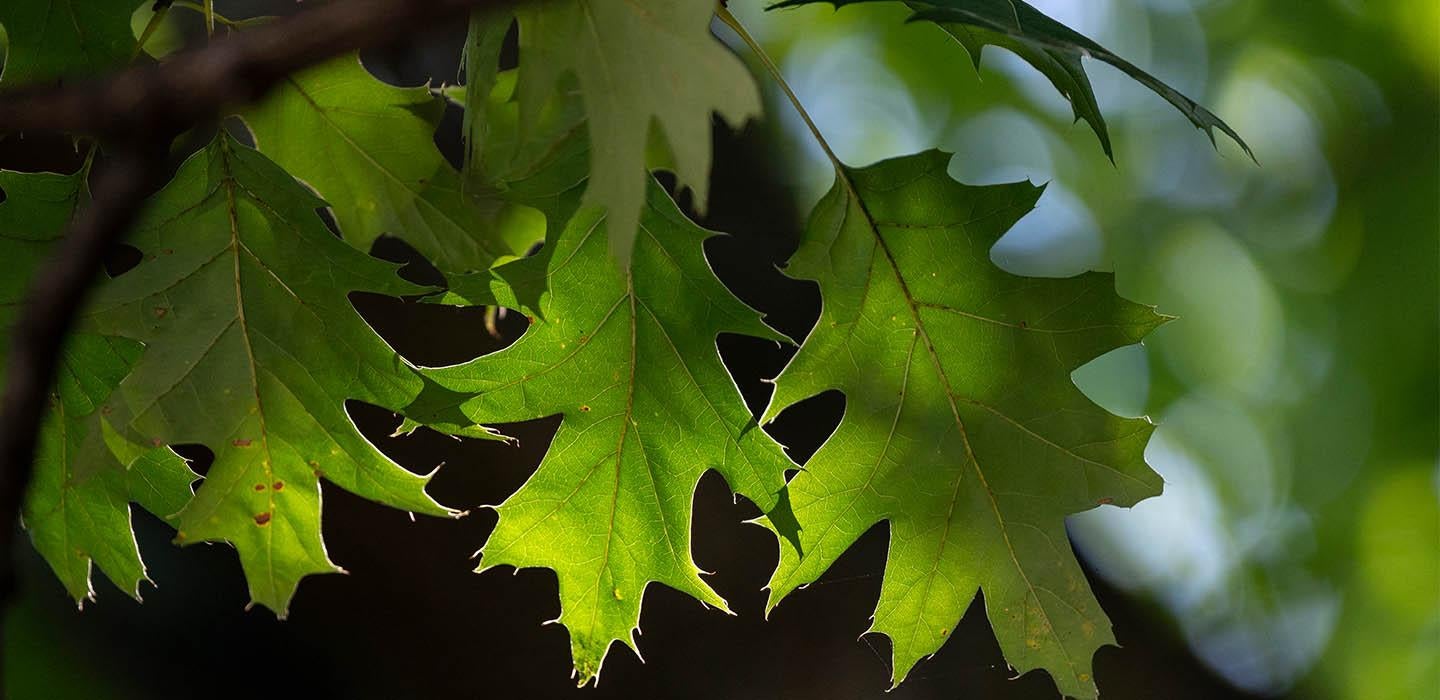
Subscribe to Pittwire Today
Get the most interesting and important stories from the University of Pittsburgh.Pitt has declared 2022-23 the Year of Emotional Well-Being, and the community has an unexpected resource for stress relief — the trees on campus.
“Spending time with trees has been shown to reduce cortisol and adrenaline levels, stress hormones that wreak havoc on our health,” said Sam Chan, assistant director of sustainability for the Office of Sustainability. “Our mental health is intertwined with our surroundings.”
Even viewing trees from your window has health benefits, she said.
“Accessing a green view while we work increases our attention spans and is thought even to help us better retain information.”
Mental health benefits are one of the reasons the University is committed to increasing its tree canopy by 50% by the year 2030, said Chan, who also leads the campus tree advisory committee.
The University’s Pittsburgh campus is already home to more than 4,000 trees. However, Chan and partners realized that the campus doesn’t have the space to reach the 2030 goal without expanding its boundary and planting trees in the Oakland neighborhood as well.
Through a partnership with the Oakland Planning and Development Corporation and Tree Pittsburgh, the University offers tree tending courses to the Pitt community. To date, 76 Pitt volunteers have become certified tree tenders available to lend their expertise to building the tree canopy in Pittsburgh.
“We're hoping that by giving people this knowledge, we're not only growing the canopy in Oakland but also across Pittsburgh because they can take it back to their communities,” said Chan.
Take a tour
Are you feeling inspired to tune in to Pitt’s trees and turn off your worries? Pittwire asked Marion Holmes, professor of biological sciences who teaches classes in plant biology and scientific writing, to tell us about some of the trees you’ll meet on a walk through campus.
Learning to identify trees is a way to practice observing details, Holmes said.
“Notice the shape of a tree’s leaves, feel the underside of a leaf and determine if it's fuzzy or not. A lot of plants have a distinctive smell so don’t be afraid to make your exploration a multi-sensory experience,” she said.
Click on the hyperlinked tree names in each description below to get exact coordinates of the tree’s location.
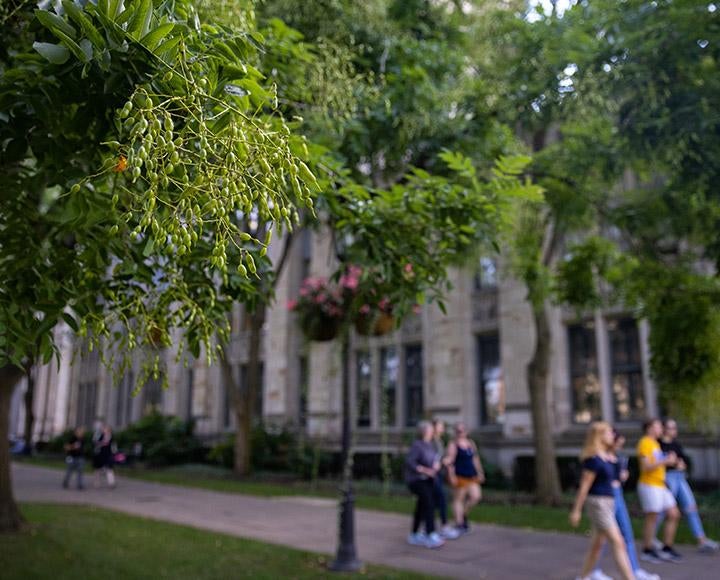
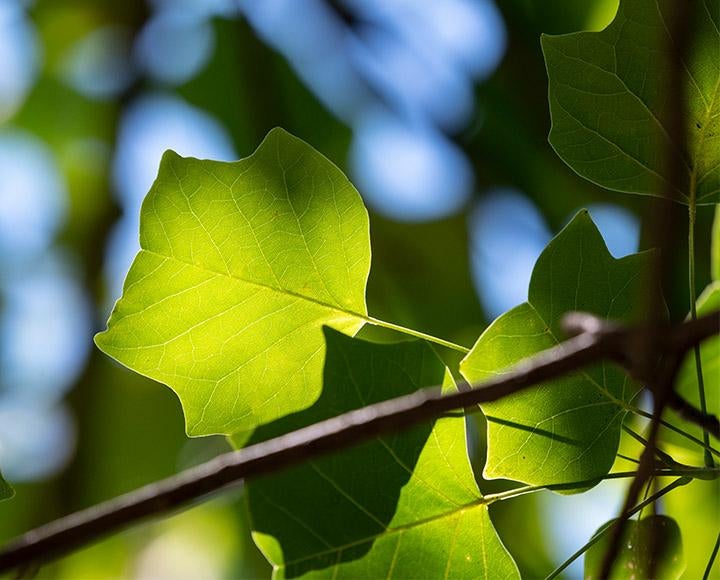
Scholar trees
Find a shady spot to study under the aptly located scholar trees outside the Cathedral of Learning entrance facing Heinz Memorial Chapel. These stately trees, also commonly referred to as Japanese or Chinese pagoda trees, sport cream-colored flowers in loose bunches six to ten inches long called panicles during the summer months. Scholar tree blossoms are noted for their light scent and bonnet shape.
The tree’s summer flowers give way in the fall to tough-skinned seed pods resembling a string of beads. The pods, considered legumes, were traditionally used in dye-making.
Scholar trees befit their name — they were once planted near temples where devotees would congregate and learn the teachings of Buddha. Scholar trees are native to China and Korea. Even though they originated across the world, they have flourished here as Eastern North America's native forest communities are similar in climate to regions in East Asia.
Tulip poplar trees
The tulip poplar tree is neither a tulip nor a poplar — but its Latin botanical name, tulipifera, means tulip bearing. Its springtime blooms, light yellow petals with an orange kiss, dot the tree’s crown, and even its leaves resemble tulips. In autumn, the tulip poplar’s foliage turns golden, a bright spot on the lawn between the Heinz Memorial Chapel and Fifth Avenue.
These trees grow straight, tall and faster than other trees found in the eastern United States; in less than 10 years, their height can reach 20 feet tall — characteristics that once made this tree’s trunk popular wood for dugout canoes, fence posts and railroad ties.
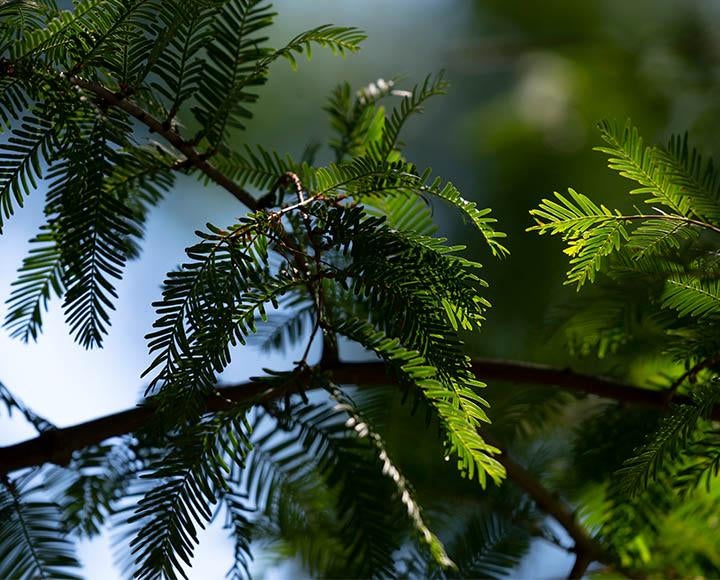
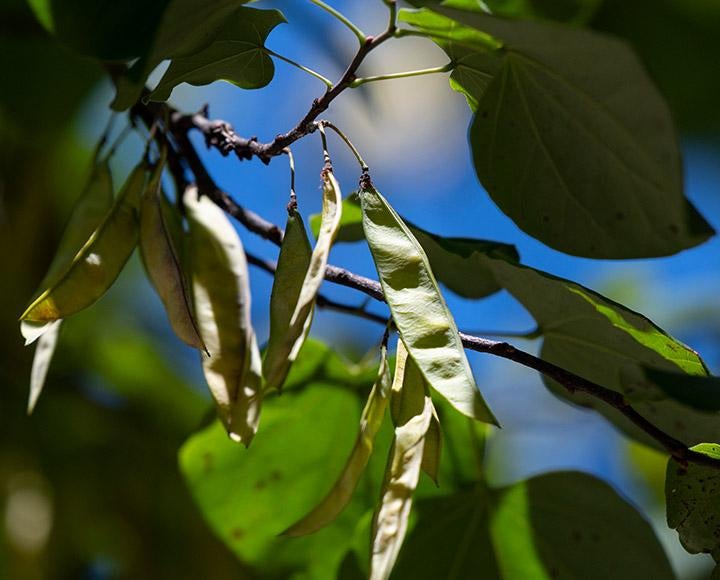
Dawn redwood
The dawn redwood, once extinct in North America, was reintroduced to the U.S. in 1948 using seeds from a grove in China.
Find this tree catty-corner from the Stephen Foster Memorial. You can’t miss its shaggy, rust-colored bark and knotty roots. It's also one of a few conifers found on campus — that is, it grows needles instead of leaves, yet it is not evergreen. The foliage of dawn redwood trees turns tawny in winter and falls off its branches.
Eastern redbud
The eastern redbuds, located outside Bellefield Hall, sport green pods in the fall resembling sugar snap peas, later turning brownish-black in winter. Lovers of springtime relish when spotting this tree's fuchsia-colored blooms — a harbinger of warmer days to come.
A member of the legume family, the eastern redbud is related to black locusts and honey locusts — trees that thrive in younger forest areas that have recently regenerated after a fire or the abandonment of agricultural land.
Its leaves are heart-shaped, a rarity for trees native to the region.
Northern red oak
The northern red oak, located outside Clapp Hall, has a beautiful, spreading structure to its branches — the look of treetops when they grow in the open, not surrounded by trees.
Native to Pennsylvania, this tree (pictured at the top of this story) is ubiquitous in local forests and urban areas. Northern red oaks aren't picky about the soil they grow in — clay, loamy or sandy, this tree can make it work.
The northern red oak is distinguished by its leaves’ sharp-tipped lobes and smoldering red color in the fall. Fun fact: No two oak leaves look identical on a tree. A leaf growing in the shade will be broader and less dissected than a leaf growing at the top of the tree’s canopy — and the higher the leaf grows, the deeper the cut into the leaf shape.
— Nichole Faina


